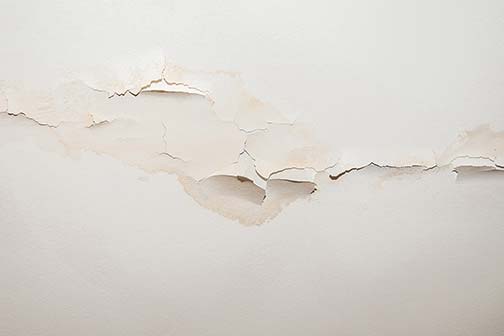
Water leaks in your home are easily the most damaging and most probable maintenance issue you will ever have in the house. The presence of water in almost every room of your home, plus the fact that water is mobile, means that water leaks and the resulting damage are a constant threat, says Ocean Blue Property Management.
However, when that water leak happens inside one of your walls, you are not just dealing with the cost of fixing your plumbing. You are also looking at the expense of fixing the damage to your walls. Moreover, if a wall inside your home is leaking, the chances that the problem has been going on for a while are quite high.
As you survey the damage to your walls, these are the four different thoughts that are going to run through your mind.
- Firstly, you will want to know the source of the water and what caused the leak.
- Next, you will wonder how much damage has been done to your walls and the cost of fixing them.
- You will think of the impact of those ugly watermarks on the aesthetics of your home.
- But most importantly, you are going to wonder how quickly you can solve the problem and return your home to its proper condition.
What causes water leaks in the wall?
Most water leaks are caused by pinhole leaks in your home’s plumbing. If the leak was the result of a major plumbing damage, such as a burst pipe, it would not be hard to spot it. You would have water cascading from the area of the leak. But this is rarely the case. The most common reasons why water would leak from a wall inside your home are:
- Damage to interior plumbing
Water pipes crisscross the length and breadth of your home. Where there are water pipes, there is a possibility of leaks. Those leaks can happen with pipes that are embedded inside the walls of the house.
- Clogged or damaged gutters and downspouts
Dirty or leaky gutters and downspouts can discharge water onto the house’s exterior walls or into the roof’s internal structures. That water may eventually find its way through the walls into the home.
- Damaged caulking and flashing
If caulking around exterior walls, windows, or aspects of your home’s exterior becomes old, water might leak into the walls. The same can happen if the flashing around the chimney, roof vents, and skylights are loose.
- Grading issues
Runoff water from rain or snowmelt should flow toward the street and not into the basement or foundation. If the soil at the base of your home does not slope away from the building, you may have issues with water flowing into the walls of your home.
What to do about leaking walls
The right solution for the problem of leaking walls depends on the cause of the problem. Detecting the source of the water leak is more than half of the solution and the most challenging part of solving the problem. Here are some of the different ways to find the cause of the leak and resolve the issue:
Step one
To determine if the water is coming from the home’s internal plumbing, turn off all faucets and water-utilizing appliances in the home. Check your water meter, note the number on it, and then wait for three hours. If the number on the meter changes, the leak is in your interior plumbing. To find the exact location of the leak, you will need to contact your local plumber.
Step two
If the leak is not in your interior plumbing, the next most likely cause of the issue is clogged gutters and downspouts or damaged caulking and roof flashing. These features of the home should be inspected. Checking the caulking on doors, windows and the corners of your house is something you can do yourself. To protect yourself and your building, let a professional inspect the roof.
Step three
If the problem is neither from your caulking nor the roof, then it is time to look at the areas around your building. In addition to poor grading, issues with your sprinkler system and basement waterproofing may also cause water leakage in the walls of your home.
Step four
If the leak originated from damaged piping, you would need to cut through your wall to replace the damaged pipe. Clogged or damaged gutters and downspouts should be cleaned and repaired. Damaged flashing should be replaced, and old caulking scraped out before the surface is re-caulked. If the issue is poor grading, you may need to tear up the entire lawn before you can solve the problem.
Step five
Only after you have found and fixed the source of the leak can you repair the damage to your walls. Repairing your walls is actually a secondary problem to your leaking walls. To ensure that the problem does not happen again, it is a good idea to have a professional plumber work with you on solving the issues.
